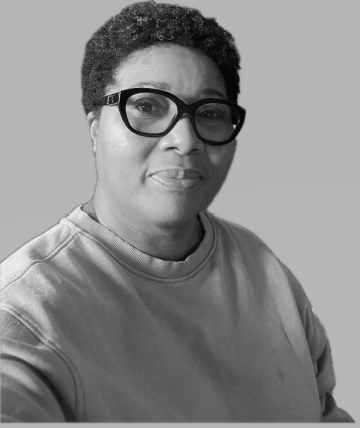Income Statement & Statement of Financial Position (Cambridge (CIE) IGCSE Accounting)
Revision Note

Author
Donna SimpsonExpertise
Accounting Content Creator
Income Statement for Manufacturing Businesses
What is the layout of the income statement of a manufacturing business?
The income statement of a manufacturing business is prepared in a similar way to the other types of retail businesses
The income statement will be prepared after the manufacturing account
For the trading section:
Use the inventory for finished goods
Use the cost of production in place of purchases
The business might have also purchased extra finished goods
Add this to the cost of production
For the profit and loss section:
Only include expenses that relate to the non-production aspects of the business
Such as advertising, carriage outwards, etc
The expenses related to manufacturing are included in the cost of production
A business might use a factory and an office
The factory expenses are included in the cost of production
The office expenses are included in the profit and loss section

Statement of Financial Position for Manufacturing Businesses
What is the layout of the statement of financial position of a manufacturing business?
The statement of financial position of a manufacturing business is prepared in a similar way to the other types of retail businesses
The only difference is how the inventory is displayed in the current assets section
All three inventories are shown separately and the total is calculated

Worked Example
Pablo owns a small carpet and rug factory, making bespoke carpets for local furniture businesses. The following balances are provided at 31 December 2023.
$ | |
Revenue | 280 050 |
Inventory at 1 January 2023 | |
Raw materials | 7 100 |
Work in progress | 10 420 |
Finished goods | 12 450 |
Purchases of raw materials | 96 200 |
Wages of factory workers | 38 000 |
Wages of factory supervisors | 28 500 |
Wages of office and sales staff | 48 000 |
Insurance and rates | 15 000 |
General factory expenses | 13 180 |
Factory equipment at cost | 120 000 |
Provision for depreciation of factory equipment | 40 000 |
Additional Information
Inventory at 31 December 2023
Raw materials $6 860
Work in progress $10 885
Finished goods $14 650
Insurance and rates are to be apportioned ⅓ to the office and ⅔ to the factory
Factory equipment is to be depreciated at 15% using the reducing balance method
(a) Prepare the manufacturing account for the year ended 31 December 2023.
(b) Prepare the trading section of the income statement for the year ended 31 December 2023.
(c) Prepare an extract of the statement of financial position at 31 December 2023 showing the inventories.
Answer
Deal with the additional information.
Inventory at 31 December 2023
These appear as current assets on the statement of financial position
The raw materials and work in progress appears on the manufacturing account
The finished goods appear on the income statement
Insurance and rates are to be apportioned ⅓ to the office and ⅔ to the factory
Find the amount for the office
⅓ × $15 000 = $5 000
This appears in the profit and loss section of the income statement
Find the amount for the factory
⅔ × $15 000 = $10 000
This appears on the manufacturing account as a factory overhead
Factory equipment is to be depreciated at 15% using the reducing balance method
Find the net book value of the factory equipment
$120 000 - $40 000 = $80 000
Calculate the year's depreciation charge
15% × $80 000 = $12 000
This appears on the manufacturing account as a factory overhead
(a) Prepare the manufacturing account.
Pablo Manufacturing Account for the year ended 31 December 2023 | ||
$ | $ | |
Cost of material consumed | ||
Opening inventory of raw materials | 7 100 | |
Purchases of raw materials | 96 200 | |
103 300 | ||
Less: Closing inventory of raw materials | 6 860 | |
96 440 | ||
Direct wages - factory workers | 38 000 | |
Prime cost | 134 440 | |
Factory overheads | ||
Wages - Supervisors | 28 500 | |
Insurance and rates | 10 000 | |
General expenses | 13 180 | |
Depreciation of factory equipment | 12 000 | 63 680 |
198 120 | ||
Add: Opening work in progress | 10 420 | |
208 540 | ||
Less: Closing work in progress | 10 885 | |
Cost of production | 197 655 | |
(b) Prepare the trading section of the income statement.
Pablo Income statement (trading section) for the year ended 31 December 2023 | ||
$ | $ | |
Revenue | 280 050 | |
Less: Cost of sales | ||
Opening inventory of finished goods | 12 450 | |
Cost of production | 197 655 | |
210 105 | ||
Less: Closing inventory of finished goods | 14 650 | 195 455 |
Gross Profit | 84 595 | |
(c) Prepare an extract of the statement of financial position to show the inventories.
Pablo Statement of Financial Position (Extract) at 31 December 2023 | ||
$ | $ | |
Current Assets | ||
Closing Inventory: | ||
Raw materials | 6 860 | |
Work in progress | 10 885 | |
Finished goods | 14 650 | 32 395 |

You've read 0 of your 0 free revision notes
Get unlimited access
to absolutely everything:
- Downloadable PDFs
- Unlimited Revision Notes
- Topic Questions
- Past Papers
- Model Answers
- Videos (Maths and Science)
Did this page help you?